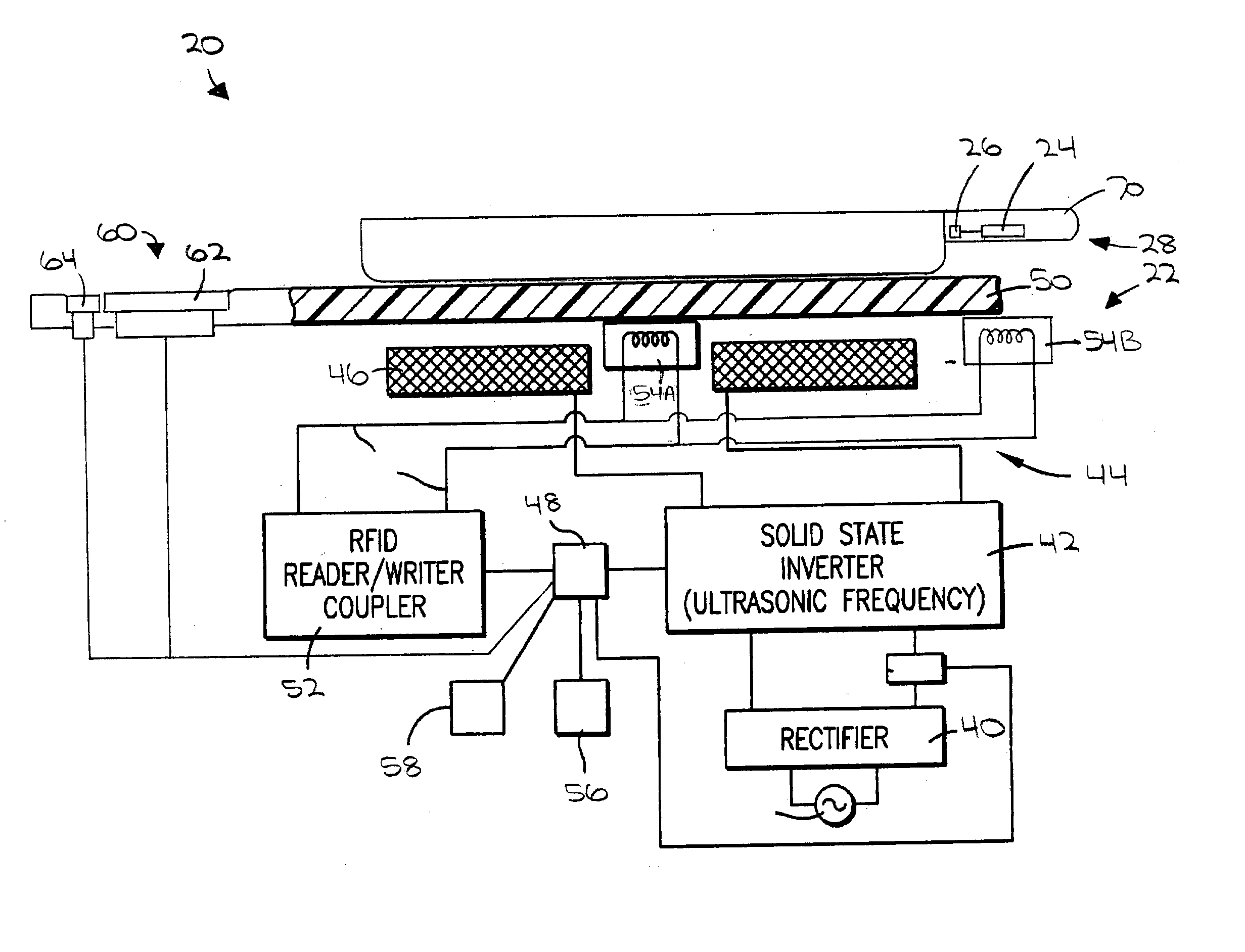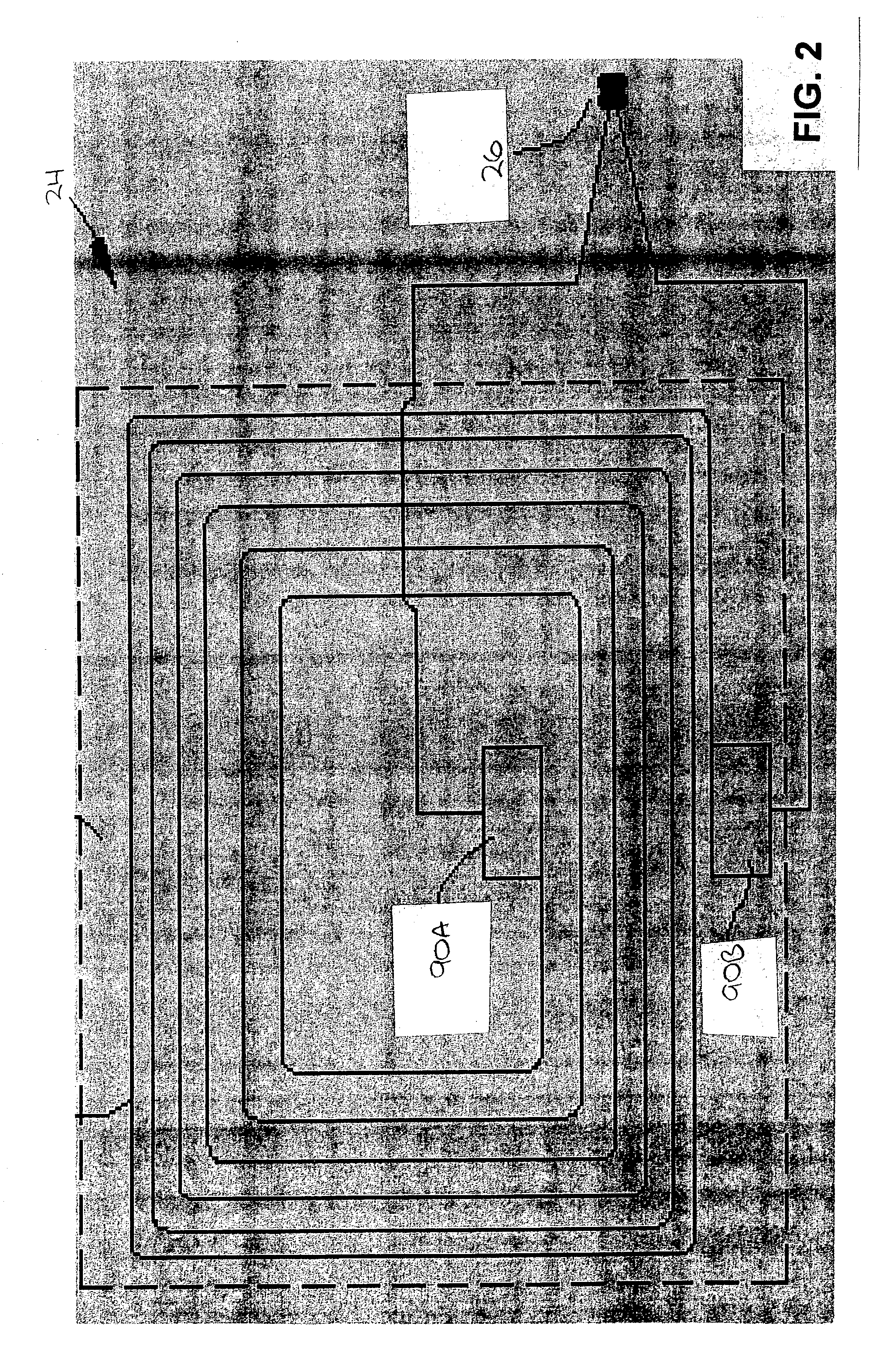RFID-controlled smart induction range and method of cooking and heating
- Summary
- Abstract
- Description
- Claims
- Application Information
AI Technical Summary
Benefits of technology
Problems solved by technology
Method used
Image
Examples
Embodiment Construction
, below.
DESCRIPTION OF THE DRAWINGS FIGURES
[0029] A preferred embodiment of the present invention is described in detail below with reference to the attached drawing figures, wherein:
[0030] FIG. 1 is a schematic showing major components of a preferred embodiment of the cooking and heating system of the present invention;
[0031] FIG. 2 is a schematic showing components of the RFID tag and temperature sensor used in the system shown in FIG. 1;
[0032] FIG. 3 is a first flowchart of method steps involved in a first mode of operation of the system shown in FIG. 1;
[0033] FIG. 4 is a second flowchart of method steps involved in a second mode of operation of the system shown in FIG. 1;
[0034] FIG. 5 is a third flowchart of method steps involved in a third mode of operation of the system shown in FIG. 1; and
[0035] FIG. 6 is a schematic of an RFID tag memory layout used in the system shown in FIG. 1.
DETAILED DESCRIPTION OF A PREFERRED EMBODIMENT
[0036] Referring to the figures, a system 20 and me...
PUM
 Login to View More
Login to View More Abstract
Description
Claims
Application Information
 Login to View More
Login to View More - R&D
- Intellectual Property
- Life Sciences
- Materials
- Tech Scout
- Unparalleled Data Quality
- Higher Quality Content
- 60% Fewer Hallucinations
Browse by: Latest US Patents, China's latest patents, Technical Efficacy Thesaurus, Application Domain, Technology Topic, Popular Technical Reports.
© 2025 PatSnap. All rights reserved.Legal|Privacy policy|Modern Slavery Act Transparency Statement|Sitemap|About US| Contact US: help@patsnap.com



